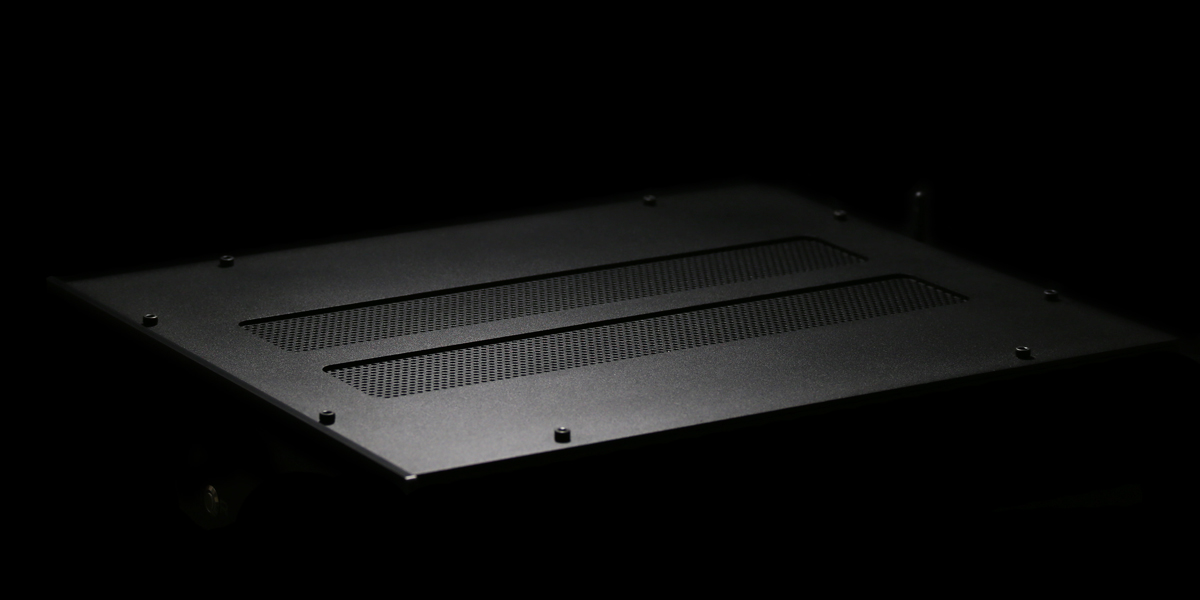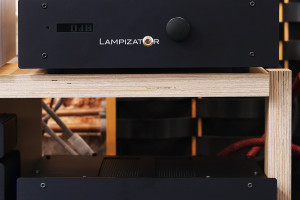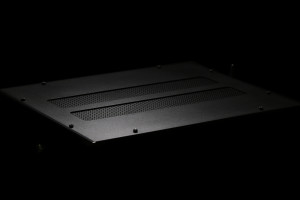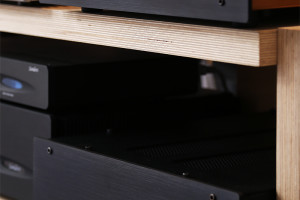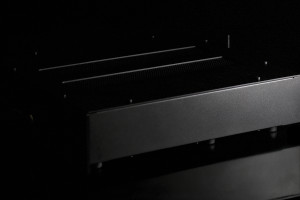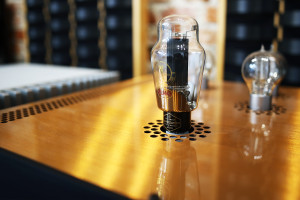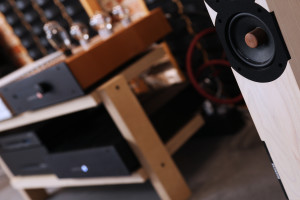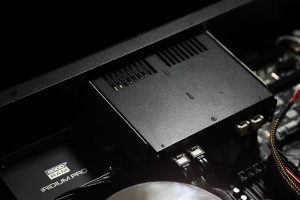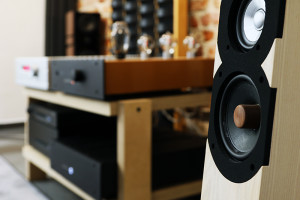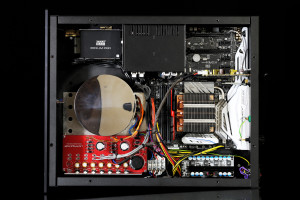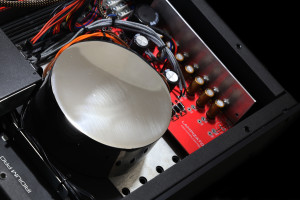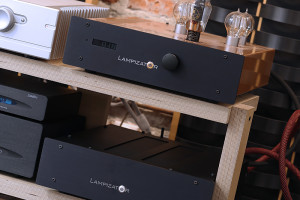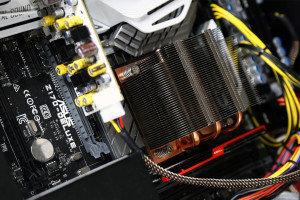After many years of USB presence in audio, it’s said that there’s still room for improvements, i.e. additional quality can be squeezed out of a system once decent transport is added. But what does decent actually mean? How much better can it get past typical Foobar2000 loaded PC? If any at all? LampizatOr SuperKomputer surely helps to answer these questions and is this report’s main dish. Enjoy.
Introduction
LampizatOr is mainly known for d/a converters. That’s the bread and butter of its main man – Łukasz Fikus. Vintage CD players repairs and upgrades are his roots after all, from such service he gained most of his knowledge. But LampizatOr’s portfolio is quite big these days. DACs are the core business, this is rather obviously seen and the safes bet is that it won’t change anytime soon. But there are also GM70/211 mono amplifiers, Silk power filter, Silver Shadow cable loom and presumably many additional products on Herr LampizatOr’s drawing board. We can rest assured that he constantly invents new devices. It’s both his hobby and the way to be fiscally viable after all.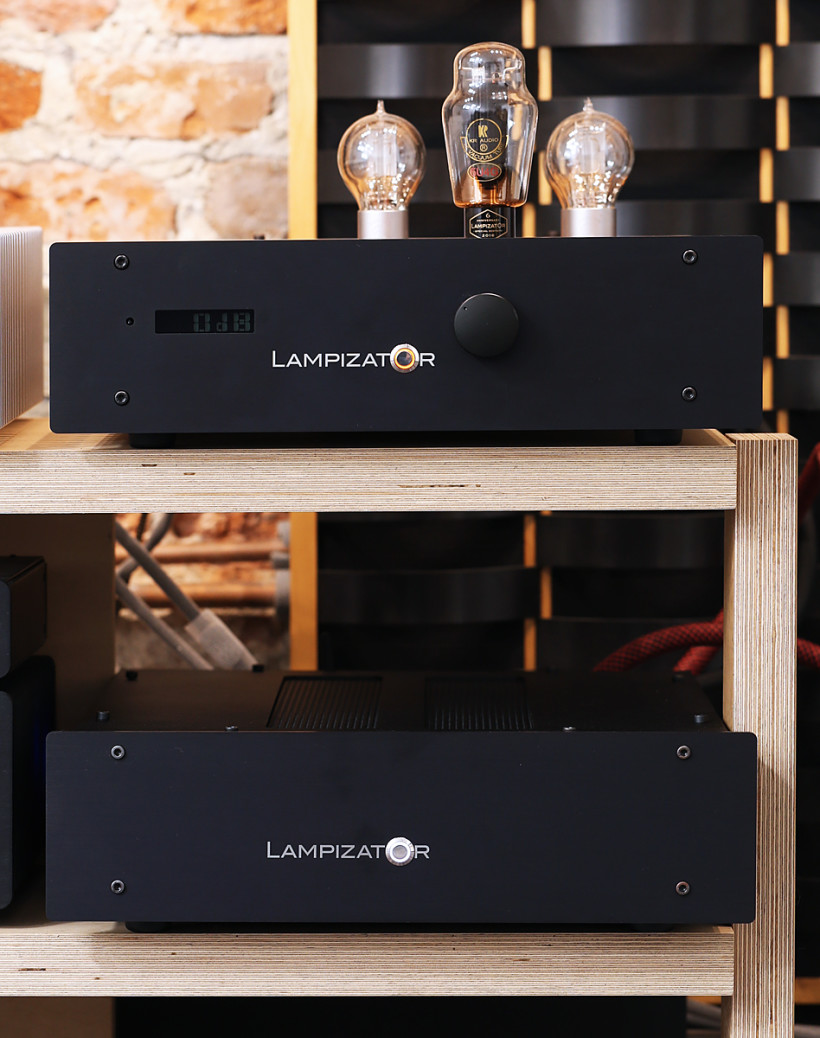 As an enthusiast, he is well-aware that his DACs are decent performers. Many happy customers surely gave him the reason to think in such way about his work. Golden Gate is without a doubt the best source I came across thus far. But at some point Łukasz started to focus on additional sound improvements in digital domain, yet past his core offering. This mindset obviously led him towards file based transports. Taking a deeper and longer look at this very topic also makes sense from purely marketing perspective. Such machines are undoubtedly hot these days. Rightfully so? We’ll see.
As an enthusiast, he is well-aware that his DACs are decent performers. Many happy customers surely gave him the reason to think in such way about his work. Golden Gate is without a doubt the best source I came across thus far. But at some point Łukasz started to focus on additional sound improvements in digital domain, yet past his core offering. This mindset obviously led him towards file based transports. Taking a deeper and longer look at this very topic also makes sense from purely marketing perspective. Such machines are undoubtedly hot these days. Rightfully so? We’ll see.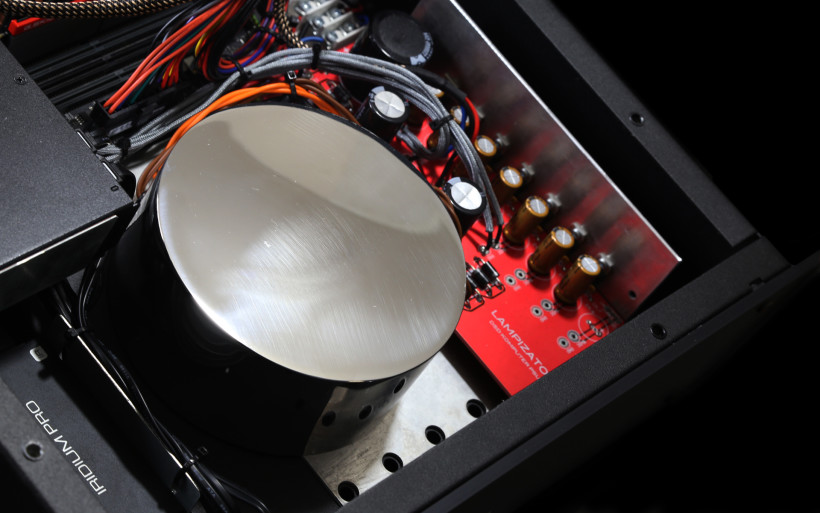 Eventually, DSD Komputer was born. It was a highly optimized, Windows-based platform which enabled files playback in an audiophile fashion. What it actually means is that its OS was highly tweaked, all unnecessary processes were removed and, among other features, battery based SSD drives and decent power supply were used. My first encounter with DSD Komputer was more than a year ago. The outcome was very promising, but there were still lots of possibilities worth additional time investment, at least that’s what I’ve been told back then. So I waited and waited and then waited some more.
Eventually, DSD Komputer was born. It was a highly optimized, Windows-based platform which enabled files playback in an audiophile fashion. What it actually means is that its OS was highly tweaked, all unnecessary processes were removed and, among other features, battery based SSD drives and decent power supply were used. My first encounter with DSD Komputer was more than a year ago. The outcome was very promising, but there were still lots of possibilities worth additional time investment, at least that’s what I’ve been told back then. So I waited and waited and then waited some more.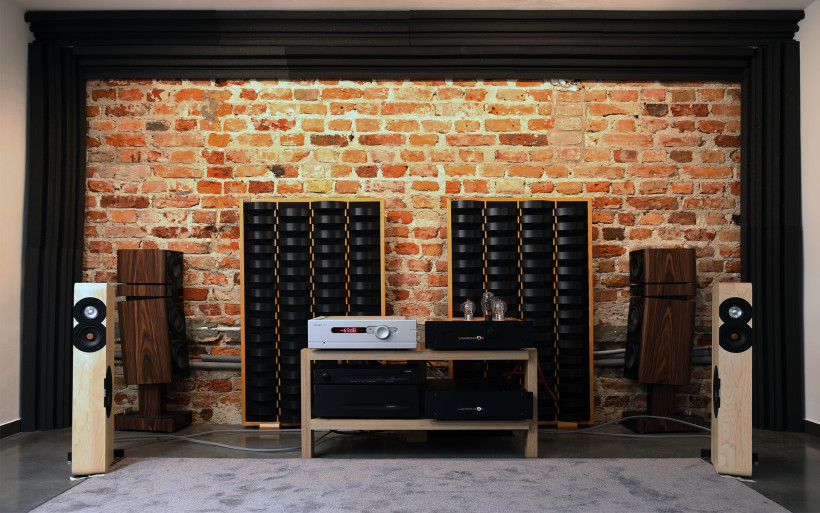 Finally, several weeks back Łukasz contacted me. He wanted to stress-test his latest transport – SuperKomputer – in an environment unknown to him. Being aware of how skilled engineer this gent is, I gladly jumped on-board. In the following days one of his tech guys – Antek – reached out. He was ready to come to my place, set everything up and leave the platform with me for several days. However, please bear in mind that this is not a typical review. Actually it’s not a review at all since the unit delivered to me was still in beta phase. I gave it a go, some audible things fleshed out rather quickly and this very material tells that tale. Hence it’ll get close and personal below, you’ve been warned. Think of it as a collection of final thoughts from an enthusiast quite aware of what equipment he has and what sound he likes, rather than a journalist.
Finally, several weeks back Łukasz contacted me. He wanted to stress-test his latest transport – SuperKomputer – in an environment unknown to him. Being aware of how skilled engineer this gent is, I gladly jumped on-board. In the following days one of his tech guys – Antek – reached out. He was ready to come to my place, set everything up and leave the platform with me for several days. However, please bear in mind that this is not a typical review. Actually it’s not a review at all since the unit delivered to me was still in beta phase. I gave it a go, some audible things fleshed out rather quickly and this very material tells that tale. Hence it’ll get close and personal below, you’ve been warned. Think of it as a collection of final thoughts from an enthusiast quite aware of what equipment he has and what sound he likes, rather than a journalist.
Background
Publication about a device in its beta stage is a tricky thing to do. One never knows how different final product will become. A cat in the bag recommendation is bad for journalistic business, hence this writing is different. It has to be. Instead of typical reviewing, some easygoing story-telling is in order. And there’s a crucial reason behind why yours truly actually decided to proceed with SuperKomputer assignment. For several years, my main storage/playback platform used to be Foobar2000 loaded old laptop by Samsung. Over this timespan and after rather extensive usage, this very machine never let me down. It always behaved predictable and was as stable as a rock. Mild amount of laziness on my end is another important factor here. When something simply works, there’s not much of a reason to commit and make a change. Although these happen eventually in case of enthusiasts such as myself and are a part of the audio game.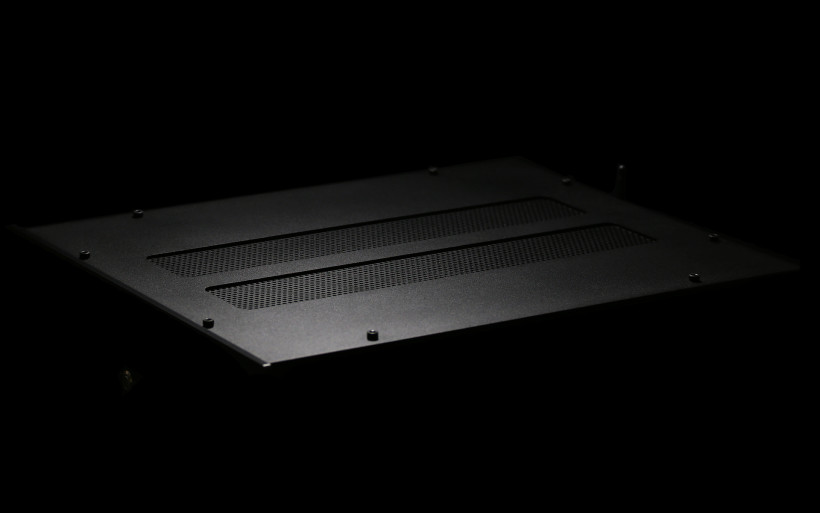 Several months back I’ve moved to a new place and it changed my personal way of thinking. At first, some acoustic treatment was applied to make the main rig work. Hollow surfaces were the biggest obstacle, it’s been taken care of rather quickly. And shortly after moving in, completely separate and brand new power line became a part of the room, due to one rather unfortunate experience. The lesson about the importance of power related aspect in particular was learned the hard way in the process. That’s a story for another time. For now the takeaway is that acoustic and power treatment hugely influenced the big rig (LampizatOr Golden Gate + Trilogy 925 + Boenicke W8) performance soundwise. The outcome wasn’t slightly, mildly or barely audibly better. The sound improved greatly and satisfaction followed.
Several months back I’ve moved to a new place and it changed my personal way of thinking. At first, some acoustic treatment was applied to make the main rig work. Hollow surfaces were the biggest obstacle, it’s been taken care of rather quickly. And shortly after moving in, completely separate and brand new power line became a part of the room, due to one rather unfortunate experience. The lesson about the importance of power related aspect in particular was learned the hard way in the process. That’s a story for another time. For now the takeaway is that acoustic and power treatment hugely influenced the big rig (LampizatOr Golden Gate + Trilogy 925 + Boenicke W8) performance soundwise. The outcome wasn’t slightly, mildly or barely audibly better. The sound improved greatly and satisfaction followed.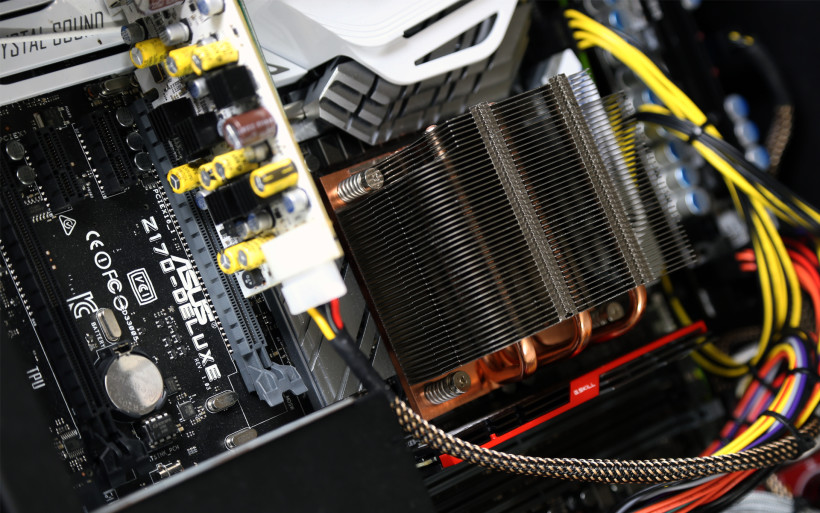 Audio enthusiasts get used to good things quickly, don’t they? Being one, I’ve asked myself the question about how things can be additionally improved. The big rig components swap was off the table. That’s pricey approach and I don’t feel that every bit of audiophile juice was squeezed out of my main setup yet. After every measure done thus far and some head-scratching, the only thing left to do finally revealed itself. My trusty old laptop had to switch places with a machine of more kosher kind. To be perfectly honest, that’s something I hadn’t tried thus far and here SuperKomputer comes into play. So to summarize, in this journalist’s case curiosity, urge of additional improvements and an unexpected opportunity to try this Polish machine were the most important and motivational factors behind this publication.
Audio enthusiasts get used to good things quickly, don’t they? Being one, I’ve asked myself the question about how things can be additionally improved. The big rig components swap was off the table. That’s pricey approach and I don’t feel that every bit of audiophile juice was squeezed out of my main setup yet. After every measure done thus far and some head-scratching, the only thing left to do finally revealed itself. My trusty old laptop had to switch places with a machine of more kosher kind. To be perfectly honest, that’s something I hadn’t tried thus far and here SuperKomputer comes into play. So to summarize, in this journalist’s case curiosity, urge of additional improvements and an unexpected opportunity to try this Polish machine were the most important and motivational factors behind this publication.
Build
LampizatOr SuperKomputer is a music server, which means that it handles music transfer stored in it to a DAC. The statement that this machine is actually a stationary computer is also factual, or, to put it even more plainly and commonly, it’s a PC. Therefore it’s comparable to products made by Computer Audio Design, a.k.a. CAD, or Sound Galleries. Typical PCs can be bought for a fraction of SuperKomputer’s price, or any other purely audio oriented machine mentioned here. But the real question is whether all PCs, of audiophile and non-audiophile sort, can perform on the same quality level with music playback? According to engineers of Łukasz Fikus or Scott Berry calibre, PC based platform wasn’t designed for audio in the first place. We use our computers for games, videos, storage, work, social etc. In short, lots of things and music is merely one of them. But we exploit that last feature extensively because it’s exceptionally convenient to do so. And there is a number of measures said engineers do in order to change a typical PC into an audiophile ready device. Let’s get back to SuperKomputer. It’s an Intel Skylake (i7-6700k) based platform, equipped with 16GB of DDR4 RAM. These components are fitted into Asus Z-170 Deluxe motherboard, which was cherry-picked as it allows extensive BIOS adjustments. I’ve been told that it took LampizatOr’s crew member one year to fully customize it. I can only add that this particular model allows heavy overclocking, but that’s not the case here. Also it turns out that this specific Asus motherboard has coaxial S/PDIF output good enough to make it available, hence it’s a part of SuperKomputer’s rear. Moving on, 128 GB Samsung 950 Pro M.2 (the fastest SSD these days) serves as this product’s main OS drive whereas 512 GB GoodRAM Iridium PRO handles storage duties. To summarize, add one of recent graphic cards and this platform will become powerful enough to make latest games in very high settings perfectly viable. But specs-wise nothing out of ordinary thus far, just a powerful PC.
According to engineers of Łukasz Fikus or Scott Berry calibre, PC based platform wasn’t designed for audio in the first place. We use our computers for games, videos, storage, work, social etc. In short, lots of things and music is merely one of them. But we exploit that last feature extensively because it’s exceptionally convenient to do so. And there is a number of measures said engineers do in order to change a typical PC into an audiophile ready device. Let’s get back to SuperKomputer. It’s an Intel Skylake (i7-6700k) based platform, equipped with 16GB of DDR4 RAM. These components are fitted into Asus Z-170 Deluxe motherboard, which was cherry-picked as it allows extensive BIOS adjustments. I’ve been told that it took LampizatOr’s crew member one year to fully customize it. I can only add that this particular model allows heavy overclocking, but that’s not the case here. Also it turns out that this specific Asus motherboard has coaxial S/PDIF output good enough to make it available, hence it’s a part of SuperKomputer’s rear. Moving on, 128 GB Samsung 950 Pro M.2 (the fastest SSD these days) serves as this product’s main OS drive whereas 512 GB GoodRAM Iridium PRO handles storage duties. To summarize, add one of recent graphic cards and this platform will become powerful enough to make latest games in very high settings perfectly viable. But specs-wise nothing out of ordinary thus far, just a powerful PC.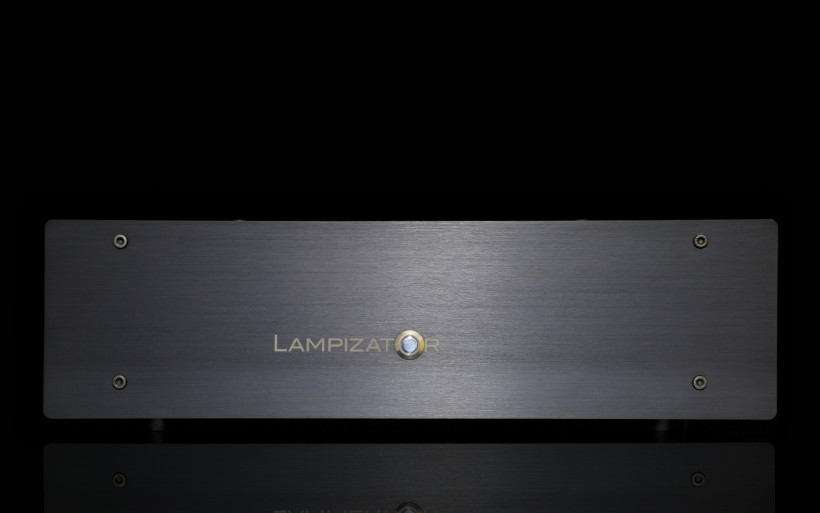 PC components aside and according to Łukasz, there are several factors that make SuperKomputer a truly audiophile platform. Said machine has LampizatOr’s proprietary, toroidal transformer based linear power supply. Its rectifier and regulation section can do linear 500 Watts, it’s supported by HDPLEX linear supply ATX module. I’ve been told that linear PSU alone is the very reason of audible improvement. But if one wishes, SuperKomputer can run off a car battery as it has a GND connection. Next in line is SOtM tX-USBexp USB 3.0 card and heavily trimmed Linux based OS. But thanks to easily available hot swap socketry on device’s left side, up to four SSDs with four different systems can be installed. What it means is that a customer can very easily find out for himself whether such measure would influence the sound. Though in order to pick a specific OS, boot priority has to be manually set in BIOS. In such case a monitor and a mouse are a must, there’s no other way around it as far as I know. And lastly, aforementioned PC components allow our Polish device to perform a PCM to DSD upsampling on the fly, without slightest hiccups and… via HQplyer. Along with Roon, this software handles playback/interface tasks. But the real implementation difficulty was in making SuperKomputer completely fanless. As long as there are no moving parts inside, namely typical storage HDDs, the product is dead quiet. This machine is also – as Mr Fikus puts it – headless. Past configuration phase and with an exception of a tablet, which comes as a handy remote control unit, LampizatOr’s latest transport doesn’t require any other peripherals. So there you have it, a headless and fanless PC platform, designed to do only one obvious thing in an audiophile fashion.
PC components aside and according to Łukasz, there are several factors that make SuperKomputer a truly audiophile platform. Said machine has LampizatOr’s proprietary, toroidal transformer based linear power supply. Its rectifier and regulation section can do linear 500 Watts, it’s supported by HDPLEX linear supply ATX module. I’ve been told that linear PSU alone is the very reason of audible improvement. But if one wishes, SuperKomputer can run off a car battery as it has a GND connection. Next in line is SOtM tX-USBexp USB 3.0 card and heavily trimmed Linux based OS. But thanks to easily available hot swap socketry on device’s left side, up to four SSDs with four different systems can be installed. What it means is that a customer can very easily find out for himself whether such measure would influence the sound. Though in order to pick a specific OS, boot priority has to be manually set in BIOS. In such case a monitor and a mouse are a must, there’s no other way around it as far as I know. And lastly, aforementioned PC components allow our Polish device to perform a PCM to DSD upsampling on the fly, without slightest hiccups and… via HQplyer. Along with Roon, this software handles playback/interface tasks. But the real implementation difficulty was in making SuperKomputer completely fanless. As long as there are no moving parts inside, namely typical storage HDDs, the product is dead quiet. This machine is also – as Mr Fikus puts it – headless. Past configuration phase and with an exception of a tablet, which comes as a handy remote control unit, LampizatOr’s latest transport doesn’t require any other peripherals. So there you have it, a headless and fanless PC platform, designed to do only one obvious thing in an audiophile fashion.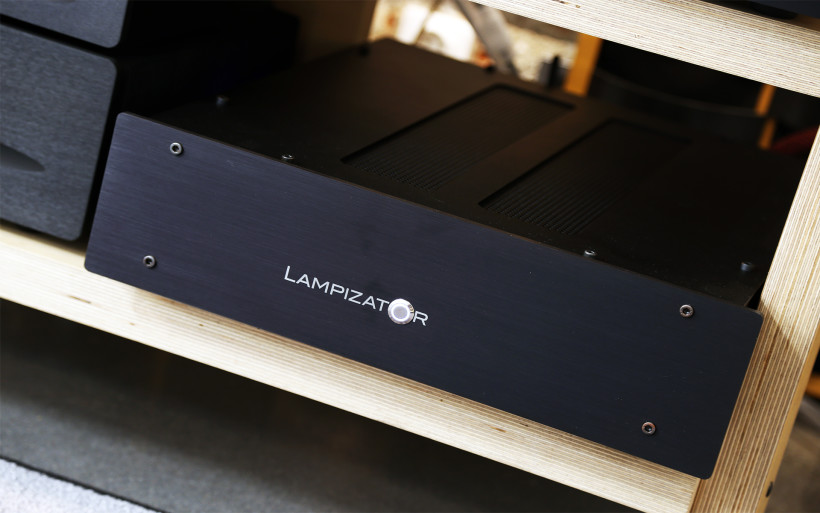 All LampizatOr SuperKomputer innards are placed in proprietary box of Big7, Golden Gate, Der Siebener and alike size. Point being, Polish music server is BIG. Its front is an aluminum plate with just one centrally located button. Said elements can also be found in other LampizatOr products. Two rectangular cuts are seen on the U-shaped top cover, each is integrated with a metal mesh, which helps in heat dissipation. On device’s left side there are four hot swap slots in total, for an additional OS/storage SSDs or 2,5′ HDD drives. SuperKomputer’s back looks rather normal, it’s a PC after all. IEC socket loaded with an on/off switch sits adjacent to motherboard’s backplate, whereas SOtM card and a Wi-Fi antenna are located a bit to the right, so is delivered product’s nameplate. What stands out of ordinary is a WBT-0703 Cu based grounding and a separate coaxial S/PDIF. These two are placed above motherboard’s socketry. And since we’re at it, it’s possible to use one of its USB outputs instead of SOtM’s product. Once this is done, the sound quality rapidly goes down. And lastly, a DIY SuperKomputer equivalent won’t come cheap, its components cost a lot in fact. Though many people try linear PSUs and OS optimizations (Fidelizer, Audiophile Optimizer) on their own and with great results.
All LampizatOr SuperKomputer innards are placed in proprietary box of Big7, Golden Gate, Der Siebener and alike size. Point being, Polish music server is BIG. Its front is an aluminum plate with just one centrally located button. Said elements can also be found in other LampizatOr products. Two rectangular cuts are seen on the U-shaped top cover, each is integrated with a metal mesh, which helps in heat dissipation. On device’s left side there are four hot swap slots in total, for an additional OS/storage SSDs or 2,5′ HDD drives. SuperKomputer’s back looks rather normal, it’s a PC after all. IEC socket loaded with an on/off switch sits adjacent to motherboard’s backplate, whereas SOtM card and a Wi-Fi antenna are located a bit to the right, so is delivered product’s nameplate. What stands out of ordinary is a WBT-0703 Cu based grounding and a separate coaxial S/PDIF. These two are placed above motherboard’s socketry. And since we’re at it, it’s possible to use one of its USB outputs instead of SOtM’s product. Once this is done, the sound quality rapidly goes down. And lastly, a DIY SuperKomputer equivalent won’t come cheap, its components cost a lot in fact. Though many people try linear PSUs and OS optimizations (Fidelizer, Audiophile Optimizer) on their own and with great results.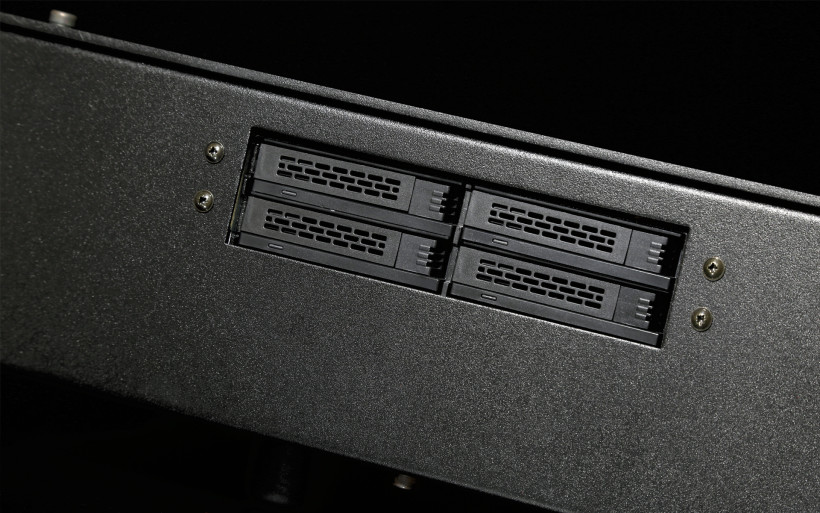 Antek got to my place well-equipped. He had lots of things with him; LampizatOr’s Silver Shadow USB and HighEnd Power cables, Lenovo Yoga 3 tablet, a small Wi-Fi router and a keyboard. I provided a monitor and a mouse. Why so? Well, it quickly turned out that the initial setup has to be done with said peripherals. Antek had to establish a wireless network and then include both SuperKomputer and a tablet in it. He had to make sure that these were configured properly and saw each other. What followed next was some HQplayer tinkering with upsampling and USB output. My PCM files collection had to be treated in such fashion in order to exploit my Golden Gate’s DSD engine. Of course Antek pointed out that native DSD is the way to go. But hey, it is what it is, I have lots of non-DSD music I enjoy and use in my work on a daily basis. The man did everything accordingly to my personal needs, after mere minutes the whole setup was done. Since the device delivered to me was a beta model, Antek kept his fingers crossed that it won’t lose its initial settings once turned off. But after the configuration process he conducted this one time, I encountered zero problems. LampizatOr’s techie even enabled a remote panel for me, so that I could tinker with various HQplayer filtering options via tablet. This was highly convenient as there was no need to use any typical PC peripherals in order to do so. Dandy.
Antek got to my place well-equipped. He had lots of things with him; LampizatOr’s Silver Shadow USB and HighEnd Power cables, Lenovo Yoga 3 tablet, a small Wi-Fi router and a keyboard. I provided a monitor and a mouse. Why so? Well, it quickly turned out that the initial setup has to be done with said peripherals. Antek had to establish a wireless network and then include both SuperKomputer and a tablet in it. He had to make sure that these were configured properly and saw each other. What followed next was some HQplayer tinkering with upsampling and USB output. My PCM files collection had to be treated in such fashion in order to exploit my Golden Gate’s DSD engine. Of course Antek pointed out that native DSD is the way to go. But hey, it is what it is, I have lots of non-DSD music I enjoy and use in my work on a daily basis. The man did everything accordingly to my personal needs, after mere minutes the whole setup was done. Since the device delivered to me was a beta model, Antek kept his fingers crossed that it won’t lose its initial settings once turned off. But after the configuration process he conducted this one time, I encountered zero problems. LampizatOr’s techie even enabled a remote panel for me, so that I could tinker with various HQplayer filtering options via tablet. This was highly convenient as there was no need to use any typical PC peripherals in order to do so. Dandy.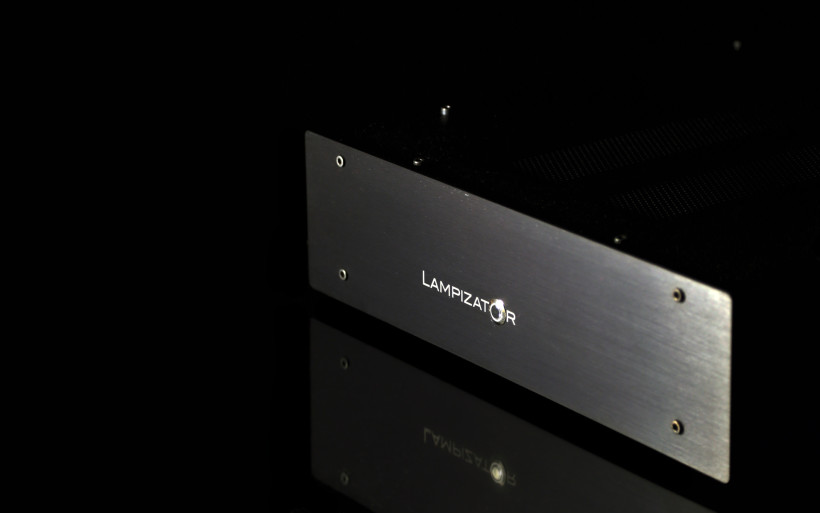 Antek was also worried a bit that in some situations SuperKomputer could go to thermal protection shutdown mode. Its passively cooled Skylake CPU is demanding in terms of heat dissipation at some point, namely during PCM to DSD upsampling via HQplayer. But after several days of said machine’s rather extensive usage, I’m happy to report that no such thing occurred. No matter the scenario. And there were some funky ones, I assure you. I’ve been also told that, among other and mainly OS related changes, the final version of SuperKomputer will have much bigger radiator, which will extrude quite a bit above its chassis. The outcome? Brace yourselves brave souls, hot rod associations are imminent.
Antek was also worried a bit that in some situations SuperKomputer could go to thermal protection shutdown mode. Its passively cooled Skylake CPU is demanding in terms of heat dissipation at some point, namely during PCM to DSD upsampling via HQplayer. But after several days of said machine’s rather extensive usage, I’m happy to report that no such thing occurred. No matter the scenario. And there were some funky ones, I assure you. I’ve been also told that, among other and mainly OS related changes, the final version of SuperKomputer will have much bigger radiator, which will extrude quite a bit above its chassis. The outcome? Brace yourselves brave souls, hot rod associations are imminent.
Sound
In order to find out what’s what, my laptop was SuperKomputer’s only opponent. This machine is too slow to handle anything more processing power demanding than Foobar2000 or jRiver. Hence HQplayer with its embedded upsampling filters had to be crossed off the viable software list. Again it needs to be stressed out than in case of PCM files and DSD engine in LampizatOr Golden Gate, said algorithms have to be used. Moving on, the transports swapping procedure was as follows: mute the amplifier, turn off the DAC, turn on one of transports, wait patiently, turn on the DAC, adjust amplifier’s volume, repeat many times until something worth reporting finally happens.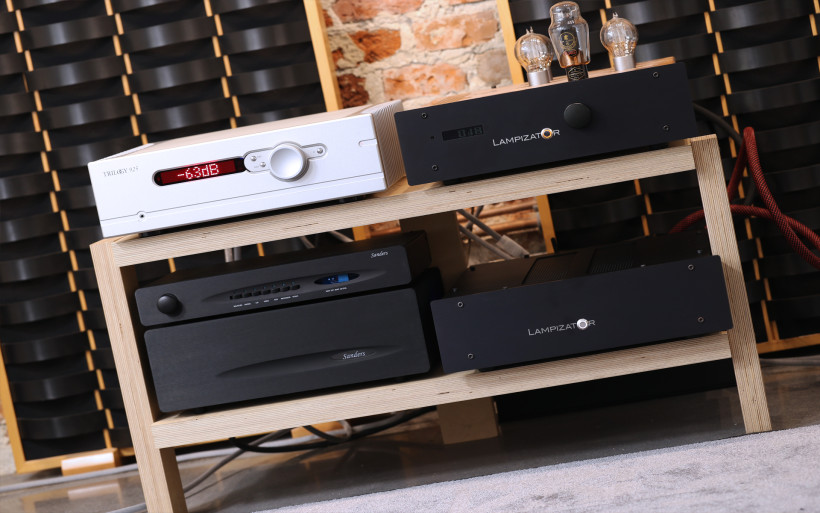 I hadn’t had to wait at all in fact. SuperKomputer’s contribution was heard instantly. After several back-and-forths, not an overall improvement but many changes followed. To some individuals this description might already be suspicious, due to compared products’ price gap as wide as The Great Canyon. But here’s the safe approach yours truly applies. Even when the sound becomes very different from what he hears on a daily basis, accommodation phase is still in order. It has to be. Jumping to conclusions prematurely never works. That could be the case with SuperKomputer, it handled the sound in more mellow and relaxed way, it performed plainly differently than my laptop right off the bat. No valid reason to be amazed was the basis of my initial impressions. On the contrary to curiosity. But that aside, outwardly enough data was collected to write this report. Yet if I’d done that back then, you’d miss the fun part and this material would presumably turn out as an apples and oranges story, which is not the case this time at all. Or to put it simple, I’d be wrong. LampizatOr products tend to sound impressively from the get-go, or even showy. But not SuperKomputer, it grew on me and this fact alone changed a lot.
I hadn’t had to wait at all in fact. SuperKomputer’s contribution was heard instantly. After several back-and-forths, not an overall improvement but many changes followed. To some individuals this description might already be suspicious, due to compared products’ price gap as wide as The Great Canyon. But here’s the safe approach yours truly applies. Even when the sound becomes very different from what he hears on a daily basis, accommodation phase is still in order. It has to be. Jumping to conclusions prematurely never works. That could be the case with SuperKomputer, it handled the sound in more mellow and relaxed way, it performed plainly differently than my laptop right off the bat. No valid reason to be amazed was the basis of my initial impressions. On the contrary to curiosity. But that aside, outwardly enough data was collected to write this report. Yet if I’d done that back then, you’d miss the fun part and this material would presumably turn out as an apples and oranges story, which is not the case this time at all. Or to put it simple, I’d be wrong. LampizatOr products tend to sound impressively from the get-go, or even showy. But not SuperKomputer, it grew on me and this fact alone changed a lot. So what really happened in the first place? Well, in comparison to my laptop, SuperKomputer sounded soft and gentle, it offered more laid back approach. But neither it was rounder nor denser performer, these aspects were intact. Said situation reminded me about Albedo Monolith cables experience from not too long ago, similar scenario took place back then and I appreciated refinement these brought. But this time, SuperKomputer’s mellow approach, albeit similar, was also more audible. If I had to frame my observations in an intensity scale, I’d give Polish wires a solid five or six points out of ten, whereas SuperKomputer would get two more. Meaningful changes in both cases.
So what really happened in the first place? Well, in comparison to my laptop, SuperKomputer sounded soft and gentle, it offered more laid back approach. But neither it was rounder nor denser performer, these aspects were intact. Said situation reminded me about Albedo Monolith cables experience from not too long ago, similar scenario took place back then and I appreciated refinement these brought. But this time, SuperKomputer’s mellow approach, albeit similar, was also more audible. If I had to frame my observations in an intensity scale, I’d give Polish wires a solid five or six points out of ten, whereas SuperKomputer would get two more. Meaningful changes in both cases.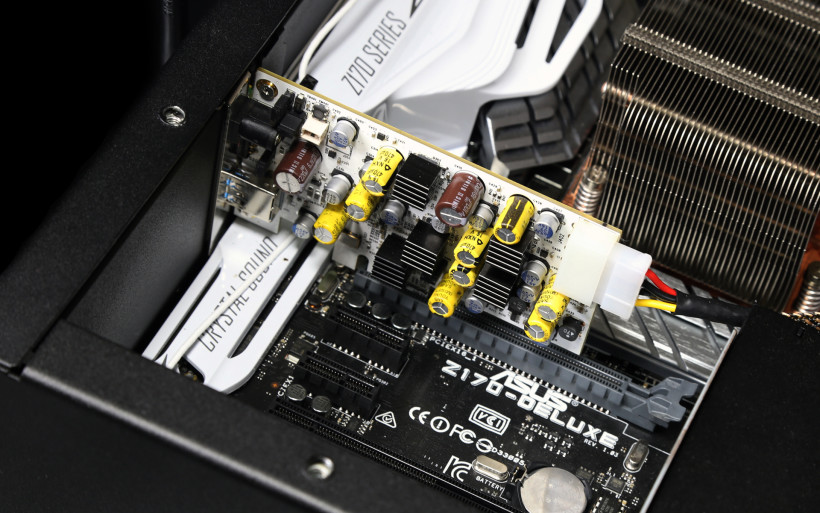 But one of significant takeaways is that past introductory phase, most of changes SuperKomputer brought, eventually morphed into improvements. Aforementioned softness and delicacy provided more vivid and lifelike experience. The outcome was more organic, tangible and completely fatigueless on top of that. After several days, my laptop wasn’t a different sound signature transport any longer, it showed its true face, which was dull, flat and a bit grainy. Said Samsung machine was also more direct, contour and even stiff at times. That’s what made me originally think of it as a different performer. It made sense in the first place to see things in such way, if we assume that directness is on one side of the spectrum whereas politeness has its place on the other. But the longer I compared the two, the more obvious it became that SuperKomputer’s attitude was mature and refined indeed, whereas its showy and feisty competitor became more and more lifeless.
But one of significant takeaways is that past introductory phase, most of changes SuperKomputer brought, eventually morphed into improvements. Aforementioned softness and delicacy provided more vivid and lifelike experience. The outcome was more organic, tangible and completely fatigueless on top of that. After several days, my laptop wasn’t a different sound signature transport any longer, it showed its true face, which was dull, flat and a bit grainy. Said Samsung machine was also more direct, contour and even stiff at times. That’s what made me originally think of it as a different performer. It made sense in the first place to see things in such way, if we assume that directness is on one side of the spectrum whereas politeness has its place on the other. But the longer I compared the two, the more obvious it became that SuperKomputer’s attitude was mature and refined indeed, whereas its showy and feisty competitor became more and more lifeless. There was also a difference in how both transports handled soundstage. Boenicke W8 speakers are very generous in this regard in particular. Thus far I was perfectly happy with what said floorstanders and my trusty old laptop were and still are able to deliver. But SuperKomputer showed more complex, airier and bigger space. Said device placed instruments slightly further away, but the sensation of greater order with darker background appeared instead. LampizatOr’s music server painted more accurate, spatial and liquid space. This wasn’t a night and day difference, yet noticeable nonetheless. And when I thought that I can finally end this material, I’ve found one aspect that stood out of the crowd.
There was also a difference in how both transports handled soundstage. Boenicke W8 speakers are very generous in this regard in particular. Thus far I was perfectly happy with what said floorstanders and my trusty old laptop were and still are able to deliver. But SuperKomputer showed more complex, airier and bigger space. Said device placed instruments slightly further away, but the sensation of greater order with darker background appeared instead. LampizatOr’s music server painted more accurate, spatial and liquid space. This wasn’t a night and day difference, yet noticeable nonetheless. And when I thought that I can finally end this material, I’ve found one aspect that stood out of the crowd.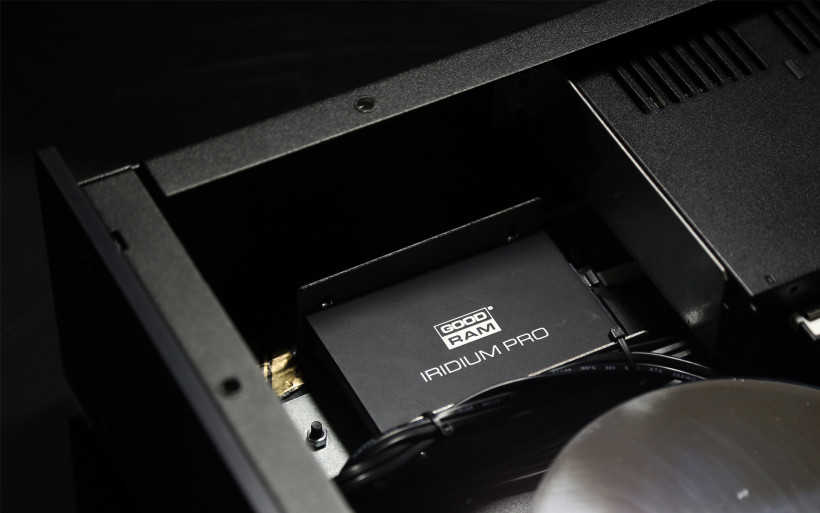 Dynamics. That’s the missing part. It turned out that SuperKomputer, despite of its many positives, performed on the slower side slightly too much and slightly too often. It wasn’t that obvious from the very beginning. But at some point, the notion of certain instruments presented in such way grew to a size of a subjective issue. Yours truly isn’t a speed freak, neither is Boenicke W8 nor Xavian Perla monitors and I had the same gripe no matter the scenario with said speakers. For instance, Sanders Sound Systems Magtech pre and amplifier combo is a bit punchier performer than Trilogy 925. Similar analogy is with Phy-HP copper speaker cables and my DIY XLR interconnects versus Albedo Monolith loom. Therefore theoretically there was a room for experiments and several were conducted. But practice showed that whether it was an amplifier or a cable swap, undesired trade-off kicked in along with it. I’m quite confident to say that there’s a very nice synergy between Boenicke W8 and Trilogy 925. It’d be a mistake to give away any of its marvelous density, spaciousness, scale and some other factors in exchange for speed only. Hence this duo is inseparable for now. In the end, with SuperKomputer, Swiss speakers, English integrated amplifier, Polish cable loom and my old laptop combo turned out to be the evil lesser than any other I’ve tried in regard of dynamics. And talking about trade-offs, I’ve used one of SuperKomputer’s USB outputs for a short while, instead of SOtM card. The outcome was faster indeed, just as Łukasz predicted, albeit the soundstage became much smaller. To put it simply, the picture was placed exactly between Sven’s floorstanders… and nowhere else. Not on every inch of the wall behind these as it should be. But the main downside was that the sense of scale was gone. W8 and small sound? Now that’s an unwanted and unexpected surprise. I could pinpoint additional losses due to said USB change. But there’s no need, who’d use regular output of this sort if SOtM card is available nearby?
Dynamics. That’s the missing part. It turned out that SuperKomputer, despite of its many positives, performed on the slower side slightly too much and slightly too often. It wasn’t that obvious from the very beginning. But at some point, the notion of certain instruments presented in such way grew to a size of a subjective issue. Yours truly isn’t a speed freak, neither is Boenicke W8 nor Xavian Perla monitors and I had the same gripe no matter the scenario with said speakers. For instance, Sanders Sound Systems Magtech pre and amplifier combo is a bit punchier performer than Trilogy 925. Similar analogy is with Phy-HP copper speaker cables and my DIY XLR interconnects versus Albedo Monolith loom. Therefore theoretically there was a room for experiments and several were conducted. But practice showed that whether it was an amplifier or a cable swap, undesired trade-off kicked in along with it. I’m quite confident to say that there’s a very nice synergy between Boenicke W8 and Trilogy 925. It’d be a mistake to give away any of its marvelous density, spaciousness, scale and some other factors in exchange for speed only. Hence this duo is inseparable for now. In the end, with SuperKomputer, Swiss speakers, English integrated amplifier, Polish cable loom and my old laptop combo turned out to be the evil lesser than any other I’ve tried in regard of dynamics. And talking about trade-offs, I’ve used one of SuperKomputer’s USB outputs for a short while, instead of SOtM card. The outcome was faster indeed, just as Łukasz predicted, albeit the soundstage became much smaller. To put it simply, the picture was placed exactly between Sven’s floorstanders… and nowhere else. Not on every inch of the wall behind these as it should be. But the main downside was that the sense of scale was gone. W8 and small sound? Now that’s an unwanted and unexpected surprise. I could pinpoint additional losses due to said USB change. But there’s no need, who’d use regular output of this sort if SOtM card is available nearby?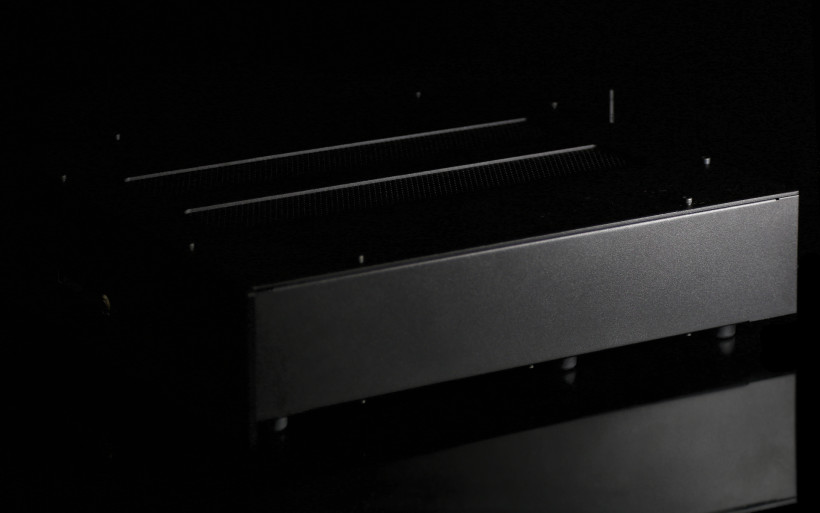 In the end, I’ve found SuperKomputer to be an exceptionally fluent performer. Its inherently easygoing sound, enhanced by deep, tangible and precise soundstage with background as black as Autumn’s night, makes the outcome coherent, very enjoyable and on the laid back side. Add great resolution and perfectly audible FR all across the board on top and that’s said machine’s rough psych profile in a pill. It turned out to be too relaxed for this enthusiast, that’s true. But great nonetheless. To speculate a bit, perhaps if I had speakers faster than aforementioned models close at hand, things would’ve been different. I can’t say, perhaps. But what’s certain to me is that SuperKomputer turned out to be something audibly different than my current transport. To find out about this was the main goal of this exercise. And in the end, diversity is one of our hobby’s trademarks, isn’t it?
In the end, I’ve found SuperKomputer to be an exceptionally fluent performer. Its inherently easygoing sound, enhanced by deep, tangible and precise soundstage with background as black as Autumn’s night, makes the outcome coherent, very enjoyable and on the laid back side. Add great resolution and perfectly audible FR all across the board on top and that’s said machine’s rough psych profile in a pill. It turned out to be too relaxed for this enthusiast, that’s true. But great nonetheless. To speculate a bit, perhaps if I had speakers faster than aforementioned models close at hand, things would’ve been different. I can’t say, perhaps. But what’s certain to me is that SuperKomputer turned out to be something audibly different than my current transport. To find out about this was the main goal of this exercise. And in the end, diversity is one of our hobby’s trademarks, isn’t it?
Summary
It’d be untrue to say that SuperKomputer experience described above was of subtle nature. On the contrary, things got very intense. Past said workout, this journalist is now fully aware of a very distinctive difference between an audiophile music server and a laptop slightly optimized in order to make the sound better. I’m a believer, simple as that. The delta of changes between two compared devices doesn’t allow me to write anything else.
It’s worth to point out that skirmish above wasn’t a good vs bad scenario all the way. Even though the price might suggest otherwise. Difference is the key descriptive word here as both machines’ input was inherently distinctive. In many aspects, €6’000 SuperKomputer performed much better. That’s very true. But the satisfaction with the outcome heavily depends on what we’re looking for and if we’re able to connect the dots in the right way. That’s why in the end I wasn’t able to part with my trusty old Samsung laptop’s feisty attitude. Subjectively, this feature alone was the only one I missed dearly in LampizatOr’s product and to a point where it eventually became a personal deal-breaker. The trade-off would be too great to cope with at this very point of my personal understanding of what’s going on in my big setup. And after taking into consideration what sound I enjoy.
Who knows? Perhaps with even jumpier and livelier speakers in the chain, there wouldn’t be any hesitation on my end? Perhaps blown away by the outcome I’d gladly ask for an invoice? Perhaps, but that’s a mystery for now. What I do know instead is that my current reference setup doesn’t need to be tweaked in mild direction any further, big adjustment of this sort simply doesn’t fit in there. It doesn’t make the picture more complete than it already is. Lack of synergy then? Yes, this time around presumably that. Yet truth be told, this adventure clearly showed what SuperKomputer does with the sound.
In comparison to my laptop, refinement delivered by LampizatOr’s latest music server is very real, very audible. Let me stress again that in its current state, SuperKomputer already performs like a champ and its vast functionality goes rather without saying. That hefty €6’000 price tag is heard loud enough to get yourself interested if you’re after this kind of sound. Once aforementioned trade-off is a goner, I know I’ll be. And this story isn’t over yet, far from it in fact. For now I’ll curiously pay attention to what Mr Fikus does with his endgame transport. Once it’s past the beta stage and when additional speakers arrive, then it’ll be the right time to investigate said machine’s topic further. Stay tuned and ’till next time.
Associated equipment:
- Loudspeakers: Boenicke Audio W8, Xavian Perla
- Amplifiers: Trilogy 925, Sanders Sound Sustems Magtech
- Digital source: Lampizator Golden Gate (WE101D-L + 5U4G Ltd. Ed.)
- Interconnects: Albedo Monolith, DIY UPOCC 7N cryo treated copper XLR
- Speaker cable: Albedo Monolith, Phy-Hp solid core
- Power chords: Forza AudioWorks Noir Concept, Gigawatt LC-2 MK2
- Power delivery: Gigawatt PF-2 mk2
- Equipment racks: Lavardin K-Rak
- Music: NativeDSD
- Playback platform: Roon
Retail prices of reviewed components in EU:
- LampizatOr SuperKomputer: €6’000
Manufacturer: LampizatOr


